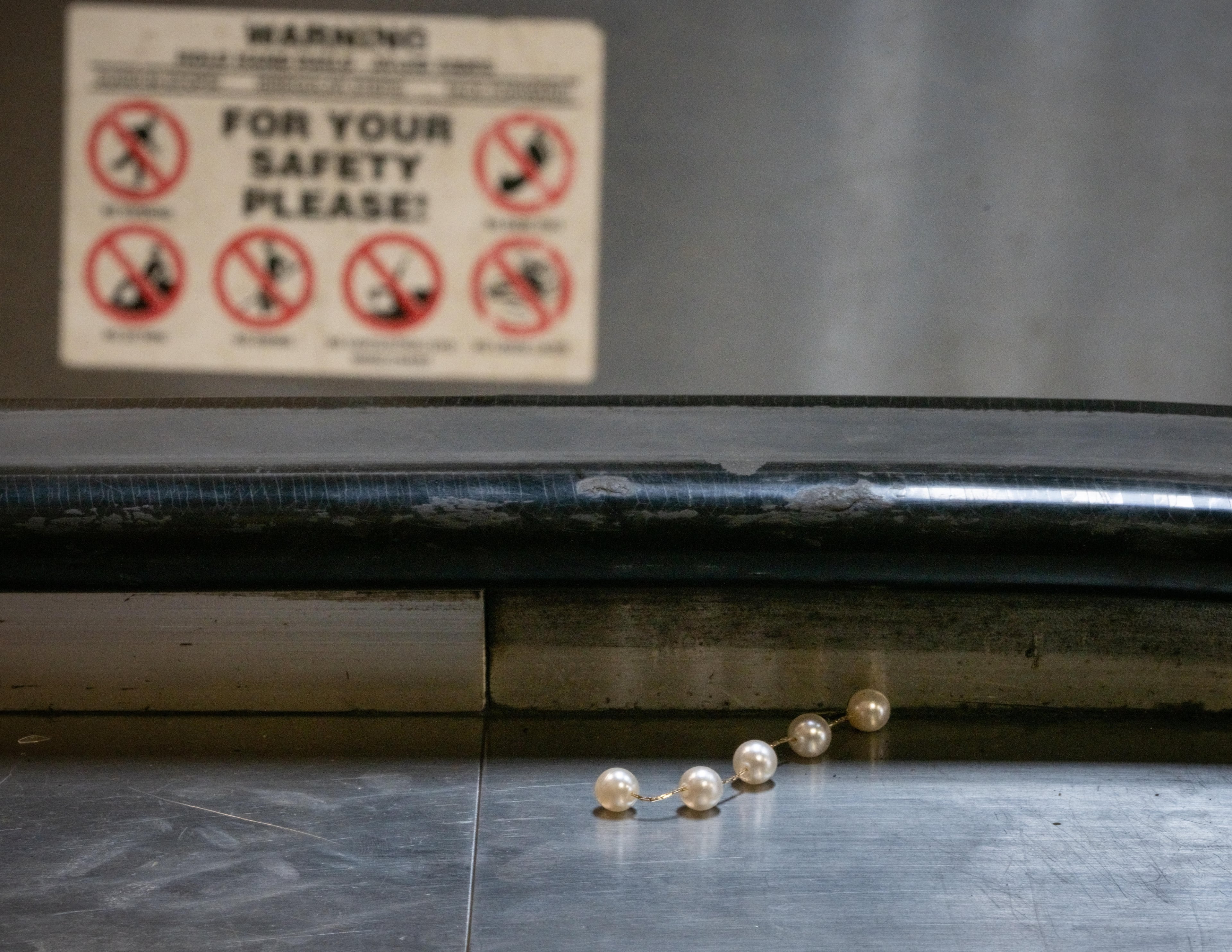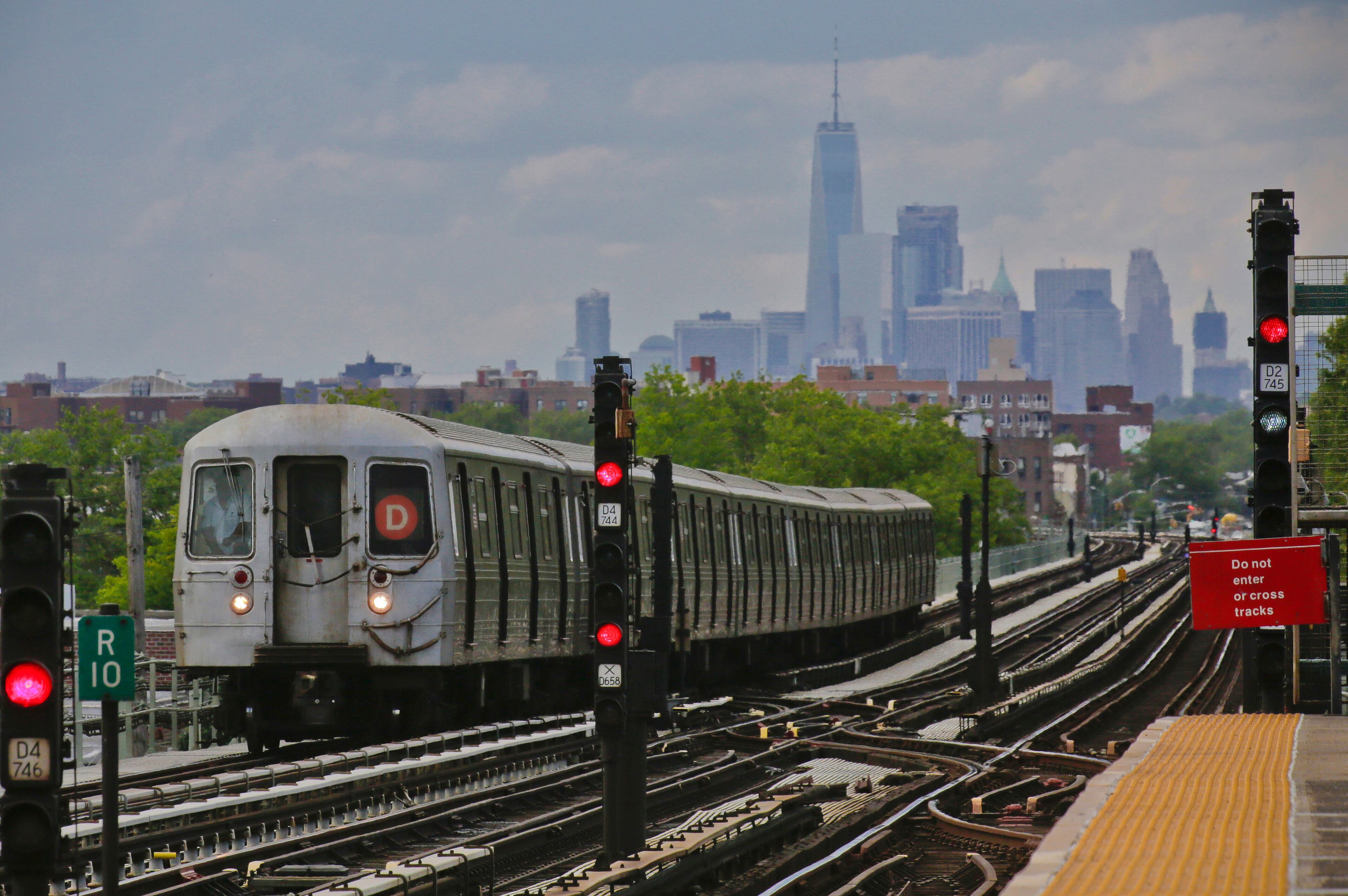Experts: Brake failure, not weight overload, likely cause of MARTA escalator failure

Riders said the escalator felt like it was in free fall.
It careened forward quickly, “four, five, six times the normal speed,” one man estimated after the New Year’s Eve crash in 2007. Revelers on their way to a college football bowl game were thrown to the bottom of the escalator in a pile. One woman broke a leg.
Accounts of the escalator malfunction at the Five Points station nearly two decades ago are strikingly similar to the incident last week at Vine City after a Beyoncé concert.
In both cases, MARTA blamed riders for the crash. In the first, they said a rowdy crowd was jumping on the escalator. In the latest, they said there was “nothing wrong” mechanically and said the problems were caused by a “stampede” of people.
Witnesses challenged both characterizations. And in the Five Points crash, MARTA eventually admitted there were problems with the braking system and a weak motor, The Atlanta Journal-Constitution reported at the time.
Escalator experts who reviewed video footage of the Vine City incident for the AJC said malfunctioning brakes are a likely cause for last week’s incident, too.
They said MARTA’s report — that the escalator was overloaded — doesn’t fully explain what happened.
The experts, and the husband of the woman who broke her leg in the 2007 incident, all said there should be a thorough investigation into the crash’s cause. Atlanta City Council member Marci Collier Overstreet made a similar request last week.
Dennis Olson, who watched video footage of Tuesday morning’s incident for the AJC, previously spent about a year in Atlanta doing a full inspection of MARTA’s escalators after another contractor was accused of bypassing safety checks.
A 40-year veteran hired to oversee escalator installation at One World Trade Center, and who has testified as an expert witness in over 400 lawsuits involving escalator issues, Olson said the moving stairs at Vine City don’t look overloaded.
But even if it was, he said, the escalator should have simply stopped — not sped up.
“What I see here, in my professional opinion, is you have a failure of the brake to hold the load back,” Olson said. “That’s a brake failure. It did not do its job.”

Tony Boom, an electrical engineer who’s worked with escalators for over 30 years, also said it looked like a brake failure after reviewing the video footage. The crowds on the Vine City escalator, while dense, weren’t enough to overload it, he said.
When there are crowds of people, it can be easy for one of the many safety devices on an escalator to be triggered, Boom said. When that happens, the power is supposed to turn off the motor, and the brakes are supposed to engage. If not, catastrophes can happen, he said.
“If the power is removed from the motor, you’ve got a roller coaster if that brake does not engage,” Boom said. “You’ll see what you saw” at Vine City.
A MARTA spokesperson said their investigation is ongoing.
“With respect to the escalators at Vine City Station, the brakes are not engaged while in operation,” Stephany Fisher said in response to a request for comment on the experts’ opinions on the cause of the malfunction. “Speed control is maintained under load through the escalators motors and control system. The brakes are designed to hold the escalator in a fixed position if it is stopped.”
The company that performs escalator maintenance requests for the transit agency did not respond to a request for comment.
Surveillance video provided by MARTA in response to a public records request shows a large crowd at the station before the escalator went haywire around 12:15 a.m. on July 15.
At one point, the crowd outside the station can be seen running — likely the point at which MARTA officials say someone screamed after seeing a bug. Inside the station on the concourse, people can be seen turning around to look in the direction of the running crowd.
While all that was going on, people walked onto the escalator calmly. A few can be seen looking back toward the concourse. Some riders are doubled up on a single stair.
It’s about 30 seconds after the reaction to the scream that the escalator begins careening, speeding to the bottom for at least seven seconds as riders hang on to the handrails.
Rhonda Allen, MARTA’s acting general manager and chief executive officer, told MARTA board members last week that their crowd control efforts call for limiting passengers to one person per step on escalators. Typical event planning involves identifying touchpoints throughout the stations: at gates, fare vending machines, escalators, elevators and the platform.
It’s not clear whether anyone was metering passengers by the escalator after the concert. Allen told the board that MARTA had roughly half as many staff working during Beyoncé’s four-day concert run as it wanted.
Bob Zimmerman, a Pennsylvania-based attorney who represented victims of an escalator malfunction at the former Giants Stadium in December 2007, said having people to manage pedestrian flow onto escalators before, during and after any big event is critical.

Overloaded escalators can stress any broken or defective parts, he said.
“Once you start seeing two or more people on every step, that’s a recipe for disaster,” Zimmerman said. One of the men injured in the Giants Stadium incident lost his leg.
When an escalator speeds up, it’s normally the result of two things coinciding, he said: crowds and improper maintenance. Zimmerman said the Vine City escalator’s emergency brakes should be examined to ensure they weren’t defective.
The attorney who represented the woman injured in the Five Points escalator malfunction said testing found a defective part that prevented the escalator from holding the weight it was supposed to hold. It was a matter of time before it failed, Michael Goldberg said.
He echoed what Zimmerman said, that big events can lead to dangerous situations if there’s any underlying problem.
The escalator experts interviewed by the AJC said the machines are typically designed to hold the weight of two people on every step and then some.
“It is incredibly difficult to overload an escalator,” Olson said.
Similar escalator malfunctions have been reported in U.S., Canadian and European cities over the past 25 years. Most involved large crowds attending sporting events.
In the most recent incident, last summer in Milwaukee, an escalator at the baseball stadium malfunctioned after a game, sending six people to the hospital. Witnesses said the escalator shook and made a loud noise before picking up speed, The Milwaukee Journal Sentinel reported. At the base of the escalator, people fell on each other in a pile.
Wisconsin state officials investigated and found that only one of the two brakes was working.
And the New Year’s Eve incident in 2007 isn’t the only other time MARTA has had issues with its escalators. Multiple other instances of escalators rapidly speeding up have been reported, including once on the long escalator at Peachtree Center in 2003.
Then in 2010, MARTA shut down two-thirds of its escalators as a precaution after learning that a maintenance contractor had bypassed a safety circuit on an escalator in Dunwoody. The man had worked on dozens of other escalators throughout the system.
Olson’s company at the time, Vertical Transportation Excellence Corp., was hired to inspect the fleet, and Schindler Elevator Corp. was hired to make repairs. Schindler now has the maintenance contract to care for MARTA’s escalators.


The Vine City escalator that malfunctioned was replaced during that overhaul, in 2011, MARTA officials said. The 14-year-old escalator is well within the typical escalator lifespan.
MARTA is in the middle of a $217 million escalator and elevator modernization project that began in 2016. As of last November, about 75% of the escalators had been updated, according to the transit agency’s website.
MARTA officials have said the escalator underwent a maintenance check just days before it crashed. Maintenance logs provided in response to a public records request show regular checks every month so far this year except for February.
The most extensive maintenance happened July 10. Annual, semiannual and quarterly maintenance tasks were marked off by maintenance technicians in addition to the items checked monthly. The brake capacity was among the items checked, according to the report.
Olson said an investigation needs to look into those and other past maintenance records. And he said MARTA needs to make sure the brake parts are completely replaced, regardless of whether they passed tests a few days earlier.
“This is not something you take a chance on putting it back into service,” he said. “You say: ‘Well, we checked it and it held.’ Well, it didn’t hold; otherwise, they wouldn’t be in this circumstance.
“Obviously, you didn’t either do it correctly or you failed to replace a part that needed to be.”
The escalator has been barricaded since the incident. State inspectors, MARTA staff and Schindler technicians have all now examined the escalator. The state’s findings are still pending but could come this week, a spokesperson for the agency that oversees escalator inspections said. Their OK is required before the escalator goes back into service.
One of the riders on the escalator that malfunctioned at Five Points said he still remembers how his wife screamed when she was pulled free. J.C. Weeks said his wife, Patricia, had to learn to walk again after breaking her leg in the incident and suffered mobility issues until her death three years ago.
“It totally changed everything with us,” Weeks said.
He said it was hard to hear that something similar had happened on an escalator again.
Editor’s note: This story has be updated to include a response from MARTA officials that was provided after publication.


